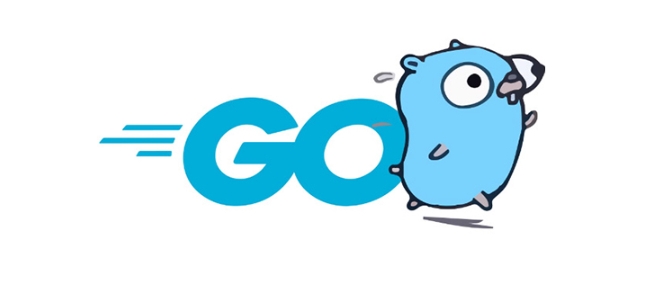Use custom profiling endpoints and conditional CPU profiling to capture performance data during real anomalies instead of relying solely on default pprof endpoints. 2. Apply precise heap and allocation profiling with --inuse_objects, --alloc_objects, and heap comparisons to identify memory leaks and hot allocation paths. 3. Enable goroutine, block, and mutex profiling via runtime.SetBlockProfileRate and runtime.SetMutexProfileFraction to detect synchronization bottlenecks and idle goroutines. 4. Generate flame graphs using go tool pprof -http or --svg for intuitive visualization of CPU usage, identifying deep stacks and time-consuming functions. 5. Conduct benchmark-driven profiling with go test -cpuprofile and -memprofile to analyze specific code paths under controlled, repeatable conditions. 6. Tune sampling rates using runtime.MemProfileRate and adjust CPU/heap profiling frequency to minimize overhead in production environments. 7. Aggregate distributed and long-running profiles using tools like Parca or Pyroscope, or combine files with pprof -concat, enabling cross-service analysis, tagging, and regression detection for scalable performance insights.

Profiling Go applications effectively goes beyond using pprof with basic CPU and memory traces. While the standard net/http/pprof or runtime/pprof packages give you a solid starting point, advanced profiling requires deeper insight into application behavior, precise instrumentation, and smart analysis techniques. Here’s how to level up your Go profiling game.

1. Custom Profiling Endpoints and Conditional Profiling
By default, importing net/http/pprof exposes profiling endpoints on localhost:6060/debug/pprof. But in production, you might not want to expose these all the time—or you may want to trigger profiling under specific conditions.
Advanced approach:

- Mount
pprofhandlers selectively:mux := http.NewServeMux() mux.HandleFunc("/debug/pprof/", pprof.Index) mux.HandleFunc("/debug/pprof/profile", pprof.Profile) // Only expose in debug mode or behind auth - Trigger CPU profiles programmatically when certain conditions occur (e.g., high latency):
if latency > 100*time.Millisecond { f, _ := os.Create("high_latency_cpu.pprof") pprof.StartCPUProfile(f) time.AfterFunc(30*time.Second, pprof.StopCPUProfile) }
This lets you capture profiles during real anomalies, not just during synthetic load tests.
2. Heap and Allocation Profiling with Precision
Memory issues often stem from allocations, not just heap size. Use allocation profiling (-alloc_objects, -alloc_space) to see what's being created frequently.

Key commands:
# See what's currently live on the heap go tool pprof http://localhost:6060/debug/pprof/heap # See all allocations over time (not just live objects) go tool pprof http://localhost:6060/debug/pprof/allocs # Compare two heap dumps (great for spotting leaks) go tool pprof -base=heap1.out heap2.out
Pro tip: Use --inuse_objects vs --alloc_objects:
inuse_: currently allocated and not garbage collectedalloc_: total allocated over time (helps find hot allocation paths)
Filter with top, web, or list <func> to zoom in:
(pprof) top 10 --cum --alloc_space (pprof) list MyFunc
3. Goroutine and Block Profiling
If your app is slow but CPU usage is low, you might be blocked on synchronization or I/O.
Enable goroutine and block profiling:
import "runtime"
func init() {
runtime.SetBlockProfileRate(1) // sample every nanosecond spent blocking
runtime.SetMutexProfileFraction(1) // profile mutex contention
}Then inspect:
go tool pprof http://localhost:6060/debug/pprof/goroutine go tool pprof http://localhost:6060/debug/pprof/block go tool pprof http://localhost:6060/debug/pprof/mutex
Look for:
- Thousands of idle goroutines (possible leak)
sync.Mutexorchanneloperations dominating block profiles- Goroutines stuck in
select,chan send, ornet IO
Use gv or web to visualize call stacks.
4. Flame Graphs for Intuitive CPU Analysis
Flat pprof text output can be hard to read. Flame graphs give a visual representation of where time is spent.
Generate a flame graph:
go tool pprof -http=:8080 cpu.pprof # This opens a browser with interactive flame graph
Or use pprof with --web or export to SVG:
go tool pprof --svg cpu.pprof > profile.svg
Flame graphs help you:
- Spot deep call stacks
- Identify "tall" functions (high in call stack) vs "wide" (time-consuming)
- See inlined functions (marked with
[inlined])
5. Benchmark-Driven Profiling with go test -cpuprofile
Combine profiling with benchmarks for repeatable, controlled analysis.
go test -bench=MyFunc -cpuprofile=cpu.prof -memprofile=mem.prof
Now you can:
- Profile only the code under test
- Reproduce issues with known inputs
- Compare profiles across versions
Use pprof on the generated files:
go tool pprof -http=:8080 cpu.prof
This is especially useful for optimizing hot paths.
6. Sampling Rate Tuning and Overhead Control
Profiling has overhead. In production, you may need to reduce impact.
- CPU profiling: samples stack every 10ms by default (low overhead)
- Heap profiling: can be expensive if
rateis too high
Control heap sampling:
import "runtime" runtime.MemProfileRate = 512 * 1024 // profile 1 in 512KB allocated (default: 512KB) // Set to 0 to disable, or 1 for full precision (not recommended in prod)
For low-overhead production monitoring, consider:
- Sampling heap every few minutes
- Enabling mutex/block profiling only temporarily
7. Distributed and Long-Running Profile Aggregation
For long-running or distributed services, single profiles aren't enough.
Strategies:
- Collect profiles periodically and compare over time
- Use tools like Parca or Pyroscope for continuous profiling
- Aggregate profiles from multiple instances using
pprof -concat
Example:
go tool pprof -concat profile1.pprof profile2.pprof combined.pprof
These tools support:
- Stack unwinding across services
- Tagging by host, version, or endpoint
- Alerting on performance regressions
Profiling Go apps at scale isn’t just about running pprof. It’s about asking the right questions—what’s slow, what’s leaking, what’s blocking—and using the right tools to get actionable answers. With custom instrumentation, precise profiling types, and visual analysis, you can go from guessing to fixing with confidence.
Basically, it’s not just what you profile, but when, how, and why.
The above is the detailed content of Advanced Techniques for Profiling Go Applications. For more information, please follow other related articles on the PHP Chinese website!

Hot AI Tools

Undress AI Tool
Undress images for free

Undresser.AI Undress
AI-powered app for creating realistic nude photos

AI Clothes Remover
Online AI tool for removing clothes from photos.

Clothoff.io
AI clothes remover

Video Face Swap
Swap faces in any video effortlessly with our completely free AI face swap tool!

Hot Article

Hot Tools

Notepad++7.3.1
Easy-to-use and free code editor

SublimeText3 Chinese version
Chinese version, very easy to use

Zend Studio 13.0.1
Powerful PHP integrated development environment

Dreamweaver CS6
Visual web development tools

SublimeText3 Mac version
God-level code editing software (SublimeText3)

Hot Topics
 Strategies for Integrating Golang Services with Existing Python Infrastructure
Jul 02, 2025 pm 04:39 PM
Strategies for Integrating Golang Services with Existing Python Infrastructure
Jul 02, 2025 pm 04:39 PM
TointegrateGolangserviceswithexistingPythoninfrastructure,useRESTAPIsorgRPCforinter-servicecommunication,allowingGoandPythonappstointeractseamlesslythroughstandardizedprotocols.1.UseRESTAPIs(viaframeworkslikeGininGoandFlaskinPython)orgRPC(withProtoco
 Understanding the Performance Differences Between Golang and Python for Web APIs
Jul 03, 2025 am 02:40 AM
Understanding the Performance Differences Between Golang and Python for Web APIs
Jul 03, 2025 am 02:40 AM
Golangofferssuperiorperformance,nativeconcurrencyviagoroutines,andefficientresourceusage,makingitidealforhigh-traffic,low-latencyAPIs;2.Python,whileslowerduetointerpretationandtheGIL,provideseasierdevelopment,arichecosystem,andisbettersuitedforI/O-bo
 Is golang frontend or backend
Jul 08, 2025 am 01:44 AM
Is golang frontend or backend
Jul 08, 2025 am 01:44 AM
Golang is mainly used for back-end development, but it can also play an indirect role in the front-end field. Its design goals focus on high-performance, concurrent processing and system-level programming, and are suitable for building back-end applications such as API servers, microservices, distributed systems, database operations and CLI tools. Although Golang is not the mainstream language for web front-end, it can be compiled into JavaScript through GopherJS, run on WebAssembly through TinyGo, or generate HTML pages with a template engine to participate in front-end development. However, modern front-end development still needs to rely on JavaScript/TypeScript and its ecosystem. Therefore, Golang is more suitable for the technology stack selection with high-performance backend as the core.
 How to install Go
Jul 09, 2025 am 02:37 AM
How to install Go
Jul 09, 2025 am 02:37 AM
The key to installing Go is to select the correct version, configure environment variables, and verify the installation. 1. Go to the official website to download the installation package of the corresponding system. Windows uses .msi files, macOS uses .pkg files, Linux uses .tar.gz files and unzip them to /usr/local directory; 2. Configure environment variables, edit ~/.bashrc or ~/.zshrc in Linux/macOS to add PATH and GOPATH, and Windows set PATH to Go in the system properties; 3. Use the government command to verify the installation, and run the test program hello.go to confirm that the compilation and execution are normal. PATH settings and loops throughout the process
 Resource Consumption (CPU/Memory) Benchmarks for Typical Golang vs Python Web Services
Jul 03, 2025 am 02:38 AM
Resource Consumption (CPU/Memory) Benchmarks for Typical Golang vs Python Web Services
Jul 03, 2025 am 02:38 AM
Golang usually consumes less CPU and memory than Python when building web services. 1. Golang's goroutine model is efficient in scheduling, has strong concurrent request processing capabilities, and has lower CPU usage; 2. Go is compiled into native code, does not rely on virtual machines during runtime, and has smaller memory usage; 3. Python has greater CPU and memory overhead in concurrent scenarios due to GIL and interpretation execution mechanism; 4. Although Python has high development efficiency and rich ecosystem, it consumes a high resource, which is suitable for scenarios with low concurrency requirements.
 How to build a GraphQL API in golang
Jul 08, 2025 am 01:03 AM
How to build a GraphQL API in golang
Jul 08, 2025 am 01:03 AM
To build a GraphQLAPI in Go, it is recommended to use the gqlgen library to improve development efficiency. 1. First select the appropriate library, such as gqlgen, which supports automatic code generation based on schema; 2. Then define GraphQLschema, describe the API structure and query portal, such as defining Post types and query methods; 3. Then initialize the project and generate basic code to implement business logic in resolver; 4. Finally, connect GraphQLhandler to HTTPserver and test the API through the built-in Playground. Notes include field naming specifications, error handling, performance optimization and security settings to ensure project maintenance
 Choosing a Microservice Framework: KitEx/GoMicro vs Python Flask/FastAPI Approaches
Jul 02, 2025 pm 03:33 PM
Choosing a Microservice Framework: KitEx/GoMicro vs Python Flask/FastAPI Approaches
Jul 02, 2025 pm 03:33 PM
The choice of microservice framework should be determined based on project requirements, team technology stack and performance expectations. 1. Given the high performance requirements, KitEx or GoMicro of Go is given priority, especially KitEx is suitable for complex service governance and large-scale systems; 2. FastAPI or Flask of Python is more flexible in rapid development and iteration scenarios, suitable for small teams and MVP projects; 3. The team's skill stack directly affects the selection cost, and if there is already Go accumulation, it will continue to be more efficient. The Python team's rash conversion to Go may affect efficiency; 4. The Go framework is more mature in the service governance ecosystem, suitable for medium and large systems that need to connect with advanced functions in the future; 5. A hybrid architecture can be adopted according to the module, without having to stick to a single language or framework.
 Go sync.WaitGroup example
Jul 09, 2025 am 01:48 AM
Go sync.WaitGroup example
Jul 09, 2025 am 01:48 AM
sync.WaitGroup is used to wait for a group of goroutines to complete the task. Its core is to work together through three methods: Add, Done, and Wait. 1.Add(n) Set the number of goroutines to wait; 2.Done() is called at the end of each goroutine, and the count is reduced by one; 3.Wait() blocks the main coroutine until all tasks are completed. When using it, please note: Add should be called outside the goroutine, avoid duplicate Wait, and be sure to ensure that Don is called. It is recommended to use it with defer. It is common in concurrent crawling of web pages, batch data processing and other scenarios, and can effectively control the concurrency process.






